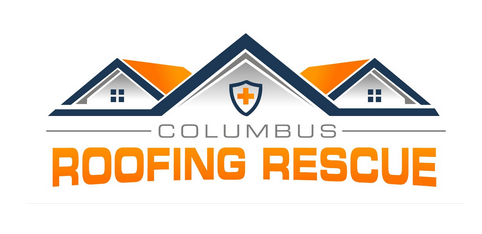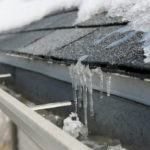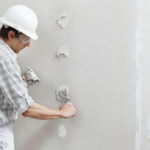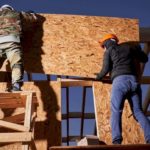
Is It OK To Put A Second Layer Of Shingles On My Roof?
Roof repairs can be costly and time-consuming, especially when deciding whether to add a second layer of shingles to your roof. While it might seem like a quick, easy solution to extend the life of your roof, it’s important understand the pros and cons before making a decision. On the one hand, adding a second layer of shingles can save you money and time on tearing off the old roof. However, it can also lead to a heavier load on your roof, compromising its structural integrity. Additionally, a second layer of shingles can cause your roof to retain heat, leading to higher energy bills during the summer months. In this article, we’ll dive deeper into the pros and cons of adding a second layer of shingles to your roof to help you make an informed decision.
What is a second layer of shingles?
Before we get into the pros and cons of adding a double layer of shingles to your roof, let’s define what it means. A second layer of shingles refers to adding a new layer of shingles on top of an existing layer of shingles instead of tearing off the old shingles. This practice is also known as a “roof-over.” A roof-over is a popular method homeowners use to save money and time on roof repairs. This would involve installing a new layer of shingles over the existing layer, which could possibly extend the life of your roof.
Pros of adding a second layer of shingles
One of the biggest advantages of adding a second layer of shingles is cost savings. Removing an old roof can be a labor-intensive and expensive process, and adding a second layer of shingles can save money on labor costs and disposal fees. Additionally, you can save time since you won’t have to wait for the old roof to be removed before installing the new one.
Another advantage of adding a second layer of shingles is improved insulation. The additional layer of shingles can help retain heat during the winter months, leading to lower energy bills. Additionally, a second layer of shingles can help reduce noise from outside, making your home more comfortable.
Finally, adding a second layer of shingles can help protect your roof from damage. The additional layer can act as a barrier against weather, such as snow, rain, and hail, which could help extend the life of your roof.
Cons of adding a second layer of shingles

One of the biggest drawbacks of adding a second layer of shingles is the increased weight on your roof. The additional layer of shingles can add significant weight to your roof, compromising its structural integrity. In extreme cases, this can lead to sagging, cracking, and even collapse. Additionally, the added weight can stress your home’s foundation, leading to costly repairs down the line.
Another disadvantage of adding a second layer of shingles is that it can cause your roof to retain heat. This can lead to higher energy bills during the summer as your air conditioning has to work harder to keep your home cool. Additionally, a second layer of shingles can make it harder to inspect your roof for damage or leaks, which can lead to expensive repairs down the line.
Finally, a second layer of shingles can affect the lifespan of your roof. While it may seem like a good solution to extend the overall life of your roof, adding a second layer of shingles can shorten its lifespan. The added weight and heat retention can cause the shingles to deteriorate faster, which can lead to more frequent repairs and replacements down the line.
Risks and potential issues with a second layer of shingles
Several risks and potential issues are associated with adding a double layer of shingles to your roof. One of the biggest risks is the added weight on your roof, leading to sagging, cracking, and even collapse in extreme cases. Additionally, the added weight can stress your home’s foundation, leading to costly repairs down the line.
Another potential issue with adding a second layer of shingles is that it can mask underlying problems. By covering up the existing shingles, you may be hiding damage or leaks that must be addressed. This can lead to some costly repairs down the line if the damage needs to be addressed in a timely manner.
Finally, a second layer of shingles can make inspecting your roof for damage or leaks harder. This can lead to problems going unnoticed until they become more serious, leading to even more costly repairs.
Building codes and regulations for a second layer of shingles
Before adding a second layer of shingles to your roof, it’s important to check with your local building codes and regulations. Some areas have strict regulations that prohibit the installation of a second layer of shingles. Additionally, some cities might require a permit or inspection before adding a second layer of shingles to your roof.
Removing the existing shingles before adding a second layer
While adding a second layer of shingles may seem easy, it’s important to consider removing them before installing a new layer. Removing the existing shingles can help ensure that your roof is structurally solid and free of damage. Removing the existing shingles can also help prevent moisture buildup, leading to mold and other health hazards.
Cost considerations for adding a second layer of shingles

When considering adding a second layer of shingles to your roof, factoring in the cost is important. While adding a second layer of shingles can save you some money, it may cost you more in the long term. Additionally, the cost of adding a second layer of shingles can vary depending on the size of your roof and the style of shingles you choose.
Hiring a professional for a second layer of shingles
If you decide to add a second layer of shingles to your roof, hiring a professional is important. A professional roofing contractor will help ensure the installation is done properly and follow local building codes and regulations. Additionally, a professional can help identify any underlying problems that must be addressed before adding a second layer of shingles.
Conclusion
Adding a double layer of shingles to your roof can be a cost-effective solution to extend the life of your roof. However, it’s important to look at the pros and cons before deciding. While adding a second layer of shingles can save you time and money, it can also put a heavier load on your roof, compromising its structural integrity. Additionally, a second layer of shingles can cause your roof to retain heat, leading to higher energy bills during the summer months. Before deciding, it’s important to consult with a professional roofing contractor and check with your local building codes and regulations.



